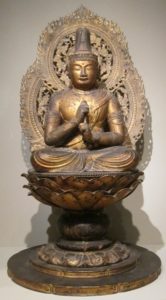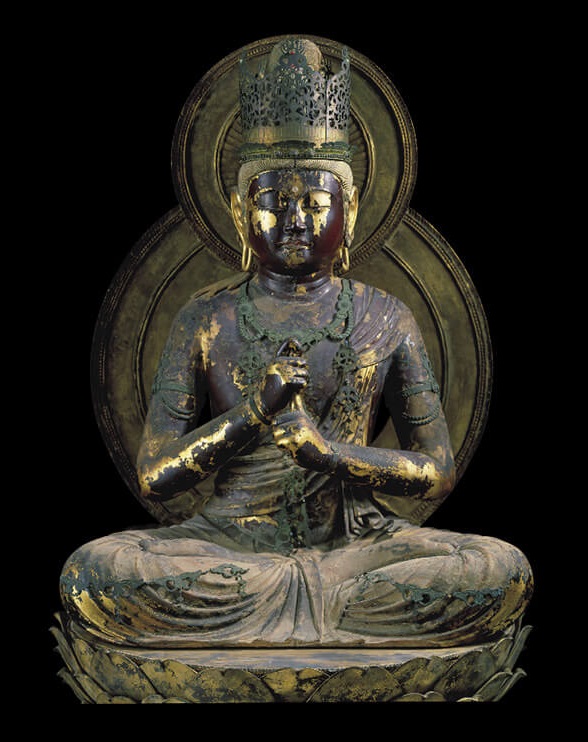The two major religions of Japan, Shintoism, and Buddhism, have an interesting history and effect on each other. For a long time, Shinto was the key religion in Japan until around the sixth century CE when Buddhism was introduced into China. The Japanese adopted Buddhism and practiced it alongside Shintoism.
Over the next few centuries, a range of Buddhist deities was introduced, all having their origins from elsewhere in Asia. For the majority of them, these Buddhist deities were from India or China, but there were some from smaller, relatively unknown religions (to the general public) across Asia, including the native Bon religion of Tibet.
The History and Significance of the god Dainichi-Nyorai
Dainichi-Nyorai was introduced at the beginning of the ninth century, along with various other deities. He is the Japanese form of the buddha Mahavairocana, or the ‘Great Illuminator’. In some esoteric sects, he became known as the supreme god and sometimes in this role, he is known as the ‘Primordial Buddha’. It is said that he invests the whole of the universe and that all other deities and demons are just manifestations of this being (linking him with his title of ‘Great Illuminator’).
 In art, Dainichi-Nyorai is shown in a seated position in profound contemplation, his right hand holding his left forefinger, representing the union of the universal with the individual soul. In some depictions, he was shown seated on a lotus pedestal, seemingly suspended within its full-moon oval. Some scholars have suggested that this was copied from a Song dynasty iconographical manuel.
In art, Dainichi-Nyorai is shown in a seated position in profound contemplation, his right hand holding his left forefinger, representing the union of the universal with the individual soul. In some depictions, he was shown seated on a lotus pedestal, seemingly suspended within its full-moon oval. Some scholars have suggested that this was copied from a Song dynasty iconographical manuel.
Many deities were often seen as aspects of Dainichi-Nyorai, including the great Fudo-Myoo and Yakushi-Nyorai, the divine healer. Ichiji Kinrin is another god who was closely associated with him. “He belongs to the iconic class Kinrin Butcho, IATl, where Kinrin, ‘The Golden Wheel’, refers to the Gold Cakravartin and Butcho, ‘The Top of Buddha’s Head’, signifies the all-encompassing wisdom bound up in the ‘nikkei’, the cranial protruberance atop a Buddha’s head. There are two forms of Kinrin Butcho: Shaka and Dainichi. Ichiji Kinrin is Dainichi Kinrin, that is, he is the primordial Dainichi of the Adamantine World Matrix (kongokai) in his absolute form. In this god, the veritable Ur-Buddha, are found, and emanate all buddhas, all bodhisattvas, all things, and indeed the world itself”.
Dainichi-Nyorai – An interesting character in Japanese history.
Whilst he was seen to be the supreme deity, it was the Five Guardian Kings of Light (directly under him) who were more popular than him himself. These deities were more accessible and appealing throughout history, but he is an integral part of Japanese Buddhism.
Bibliography:
Ford, Barbara Brennan (1987) The Arts of Japan, The Metropolitan Museum of Art Bulletin, The Metropolitan Museum of Art.
Hollis, Howard C. (1935) Dainichi Nyorai, The Bulletin of the Cleveland Museum of Art, Cleveland Museum of Art.
Yiengpruksawan, Mimi (1991) In My Image, The Ichiji Kinrin Statue at Chusonji, Monumenta Nipponica, Sophia University.





